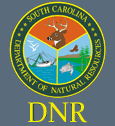Integrated Measure of South Carolina’s Estuarine Habitat Quality

SCECAP is unique compared to most state and federal monitoring programs because it combines integrated measures of water quality, sediment quality, and biological condition into an overall measure of habitat quality at each site and for the entire coastal zone within its coverage area. Multi-metric measures provide a more reliable assessment than any single measure or group of measures representing only one component of the habitat. For example, poor or fair water quality based on state standards or historical data may not result in any clear evidence of impaired biotic communities. Many of South Carolina’s state water quality standards are intentionally conservative to be protective and some contraventions of these standards are not severe enough to result in biological impairment. Similarly, fair or poor sediment quality may not result in degraded biotic condition because the organisms are either not directly exposed to the sediments (e.g., phytoplankton, fish) or because the contaminants are not readily bioavailable to the organisms. When two or more of the three measures (e.g., water quality, sediment quality,or biotic condition) are only fair or poor, there is increased certainty that the habitat may be limiting. While several studies have use a “triad” approach to measuring bottom sediment quality (e.g., Chapman, 1990; Chapman et al., 1991), very few programs have been established elsewhere that use a more holistic approach that includes water quality variables. The USEPA National Coastal Assessment Program is the most successful federal program to use an approach similar to SCECAP, although the habitat metrics and method of integrating those metrics are very different (USEPA, 2001, 2004).
The overall index of habitat quality currently used by SCECAP is described by Bergquist et al. (2009).* This index weights each of the three components equally (i.e., water quality, sediment quality, and benthic IBI scores).** A site is considered to have poor habitat quality if two or more of the components score as poor, or if one component scores as poor and the other two score only fair. A site is considered to have fair habitat quality if two or more of the habitat quality components score as fair or only one component scores as poor. A site is considered to have good habitat quality if all three components score as good or if only one of the components scores no worse than fair.***
* The index was modified for the 2005-2006 survey compared to the earlier surveys.
** The methods for computing each of these indices were also improved for the 2005-2006 survey.
*** See each of the individual reports for a summary of overall habitat condition for each survey period.

